You might expect that all the moving parts of a comprehensive software platform be designed to work well together. But Microsoft really took that to heart when they developed their 365 platform. I recently discovered that Teams and Outlook are far more in sync than I had previously realized. On top of that, they have added new shortcuts to make that synergy easier to exploit. So if you are like me and spend your workday jumping back and forth between Teams and Outlook windows, you’ll appreciate these tips and tricks I’ve discovered. Get ready to save yourself a whole bunch of time! I’m going to share a few with you in this post, and then the rest in a followup post next week.
Today I will cover:
- Dragging and dropping content from Outlook into Teams
- Syncing your Tasks between Outlook and Teams
- Setting up Outlook autoreply messages from Teams
- How to check your email without leaving Teams
Drag and drop content from Outlook to Teams
On a pretty regular basis, I need to move files from Outlook to Teams. Until I found out about this, I would move the content by downloading the file attachment from Outlook to my computer, then use the Upload command in Teams to call it back up, like this:
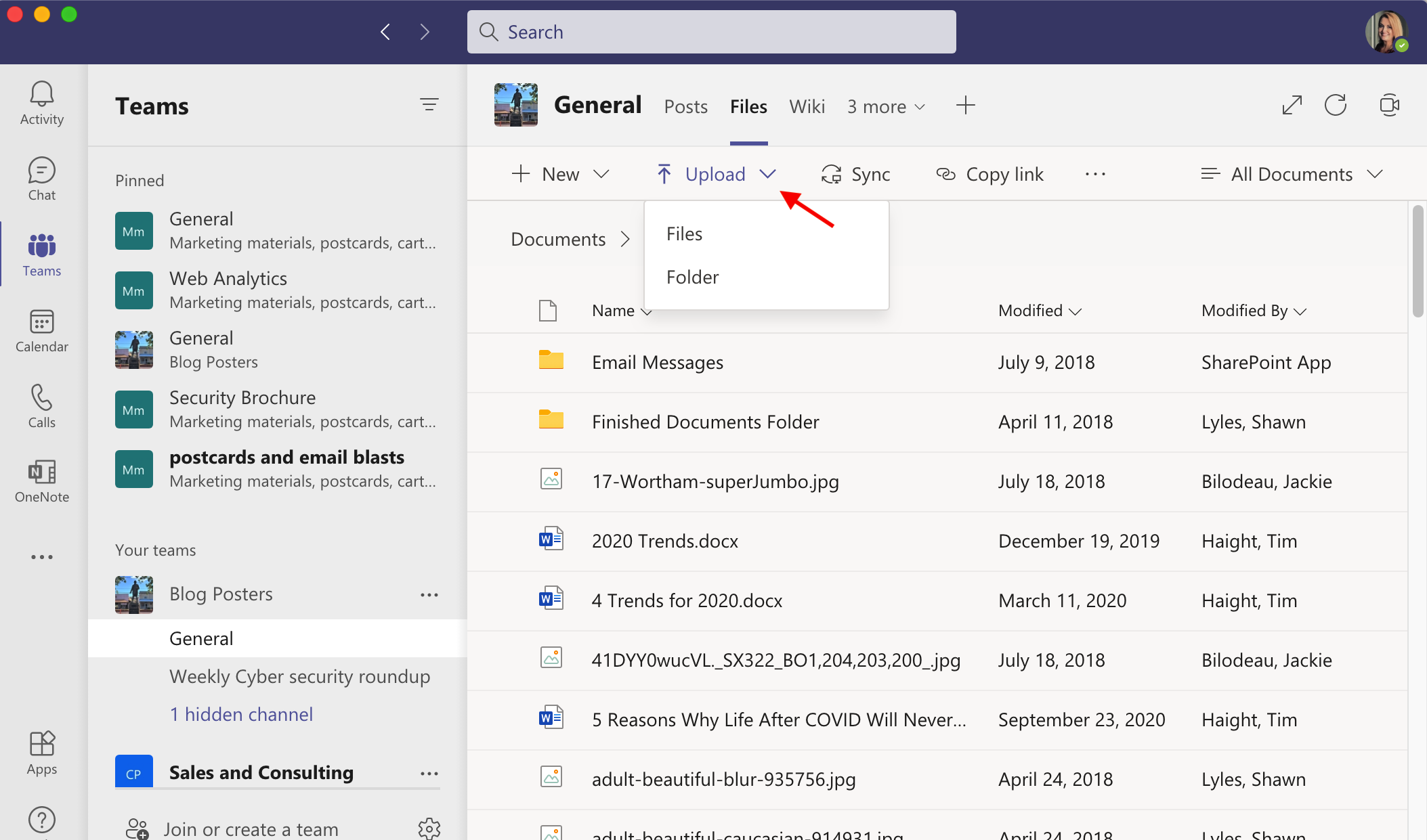
Well, as it turns out, you can actually drag and drop content between the two modules. Exactly like it sounds, you just open both Outlook and Teams Windows (or if you ‘re like me, they’ve already been open since you started work this morning) and then left-click and drag the file from Outlook across to Teams.
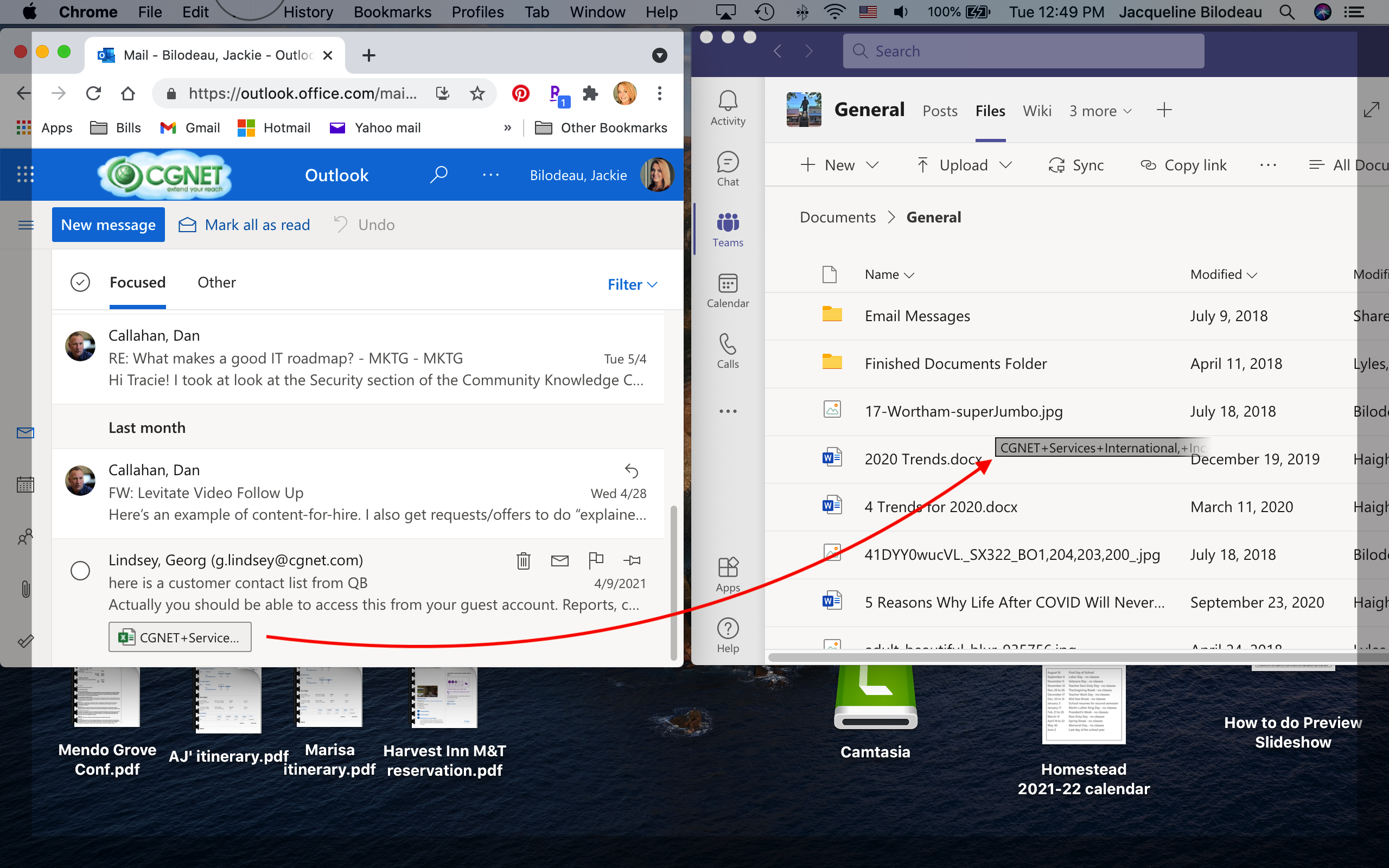
You can drop the file directly into the Files tab of any channel, or into the Post section for that channel as part of an ongoing (or new) conversation. (If you drop it into a conversation it automatically saves to the Files tab as well.) So easy!
Sync Tasks between Outlook & Teams
Because Outlook and Teams use the same back-end service, a calendar entry in one module automatically syncs to the other. In the same way, did you know that the Tasks you set up in Outlook can be viewed and edited within Teams? Well, they can, once you set up Teams to allow it.
Here’s how: In the left sidebar in Teams, where you see Activity, Chat and so on, click on the Apps button at the bottom. Then select the app “Tasks by Planner and To Do”.
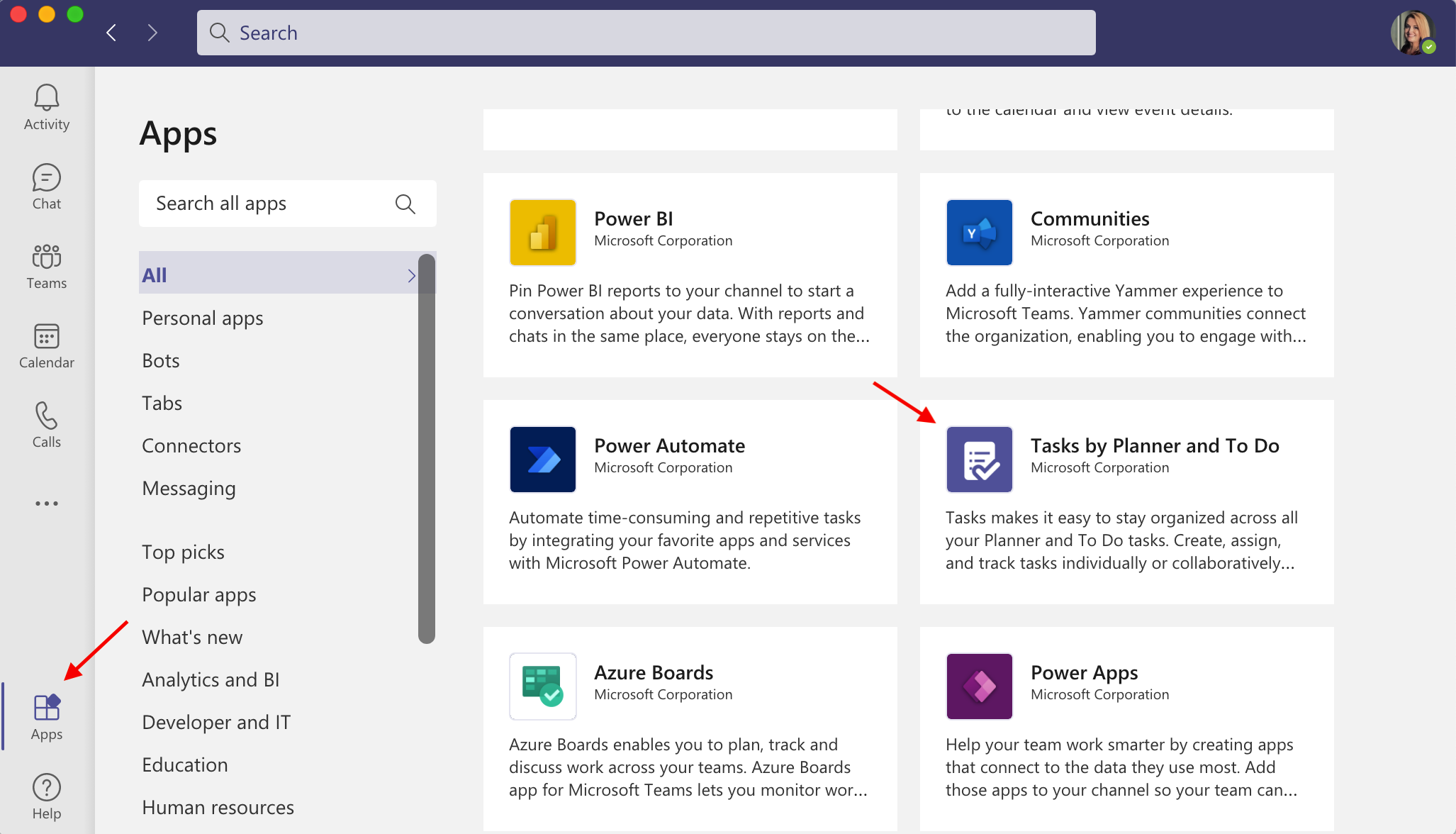
This will install a Task section in Teams that automatically syncs with your Tasks in Outlook. Here’s what it looks like (obviously, I’ve just set mine up for the first time, so it is still wonderfully task-free):
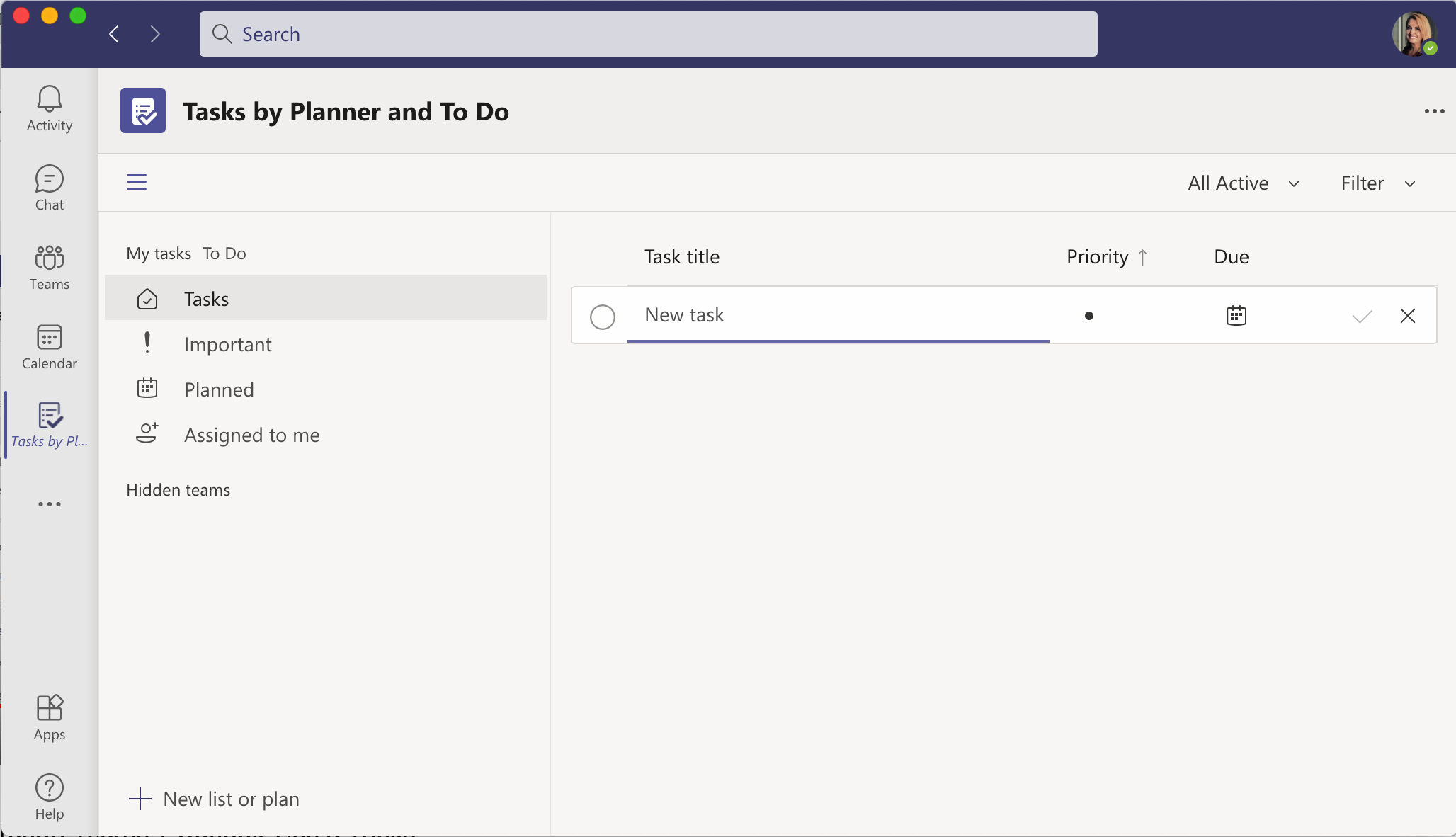
If you think that you’ll want to use the Tasks app in Teams regularly, be sure to pin it to your sidebar for easier access (right-click on the Tasks app, click “pin”).
Set up Outlook autoreplies from Teams
Did you know you can actually set up office autoreplies for your Outlook email without leaving Teams? It’s as simple as adjusting your settings. In Teams, click on your profile image, then Settings. Down at the bottom you see the “Out of Office” option. Once you click on it, you will get the same options as you do in Outlook to type in a message, time range, and so on.

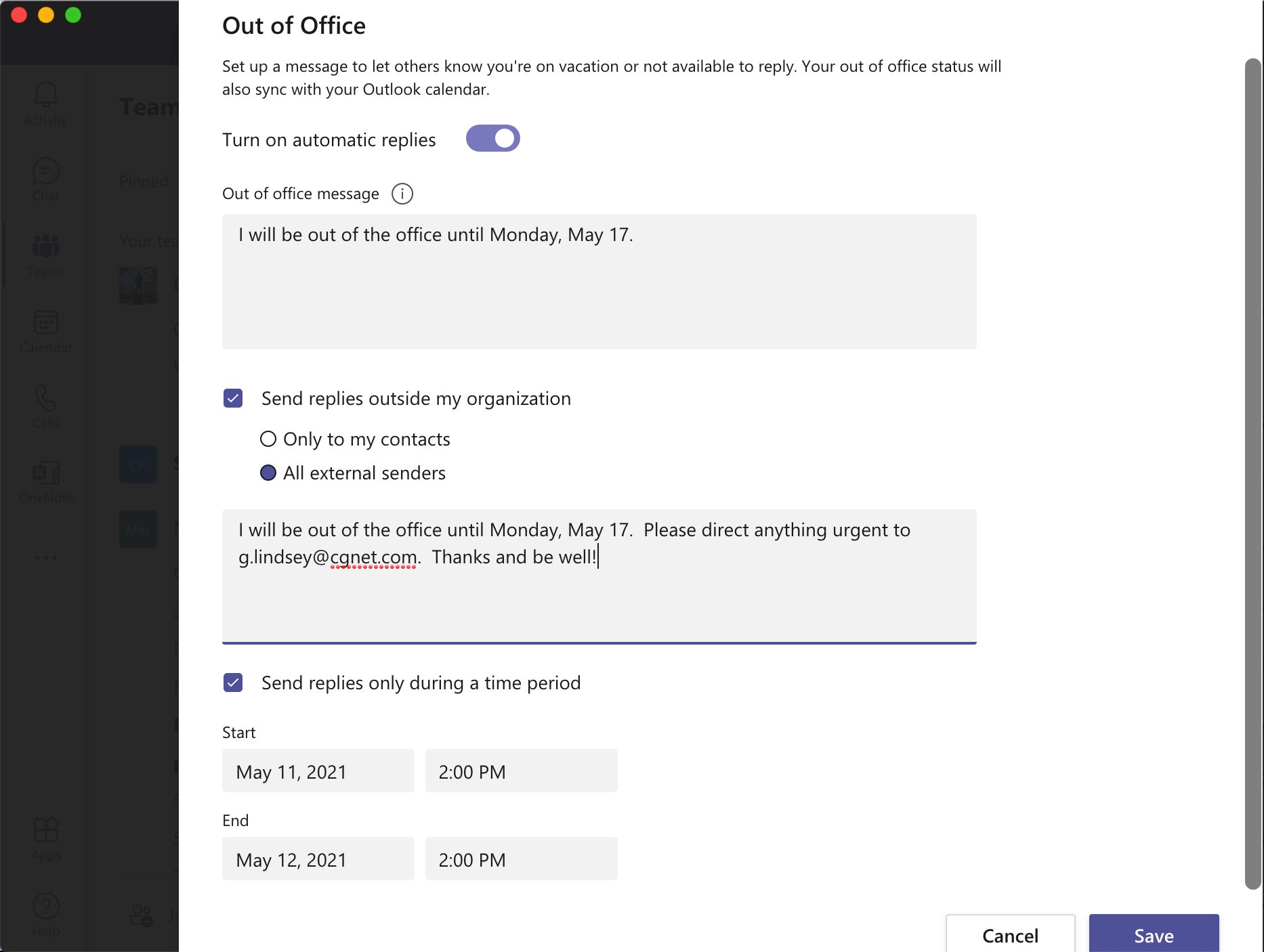
Check email without leaving Teams
This one is super-handy, and I wish I had known about it sooner! It’s as simple as setting up a tab in a Team channel that links to your Outlook inbox. So convenient, right? (Tabs, by the way, are your ticket to taking full advantage of Microsoft 365 integration.)
Here’s what you do: Within any team, click on a channel (in my example, I chose General, but it doesn’t matter which channel you choose). Then click on the + sign.

From the apps menu, select Website, then fill in the details by naming the tab “Email” and putting in the Outlook URL:
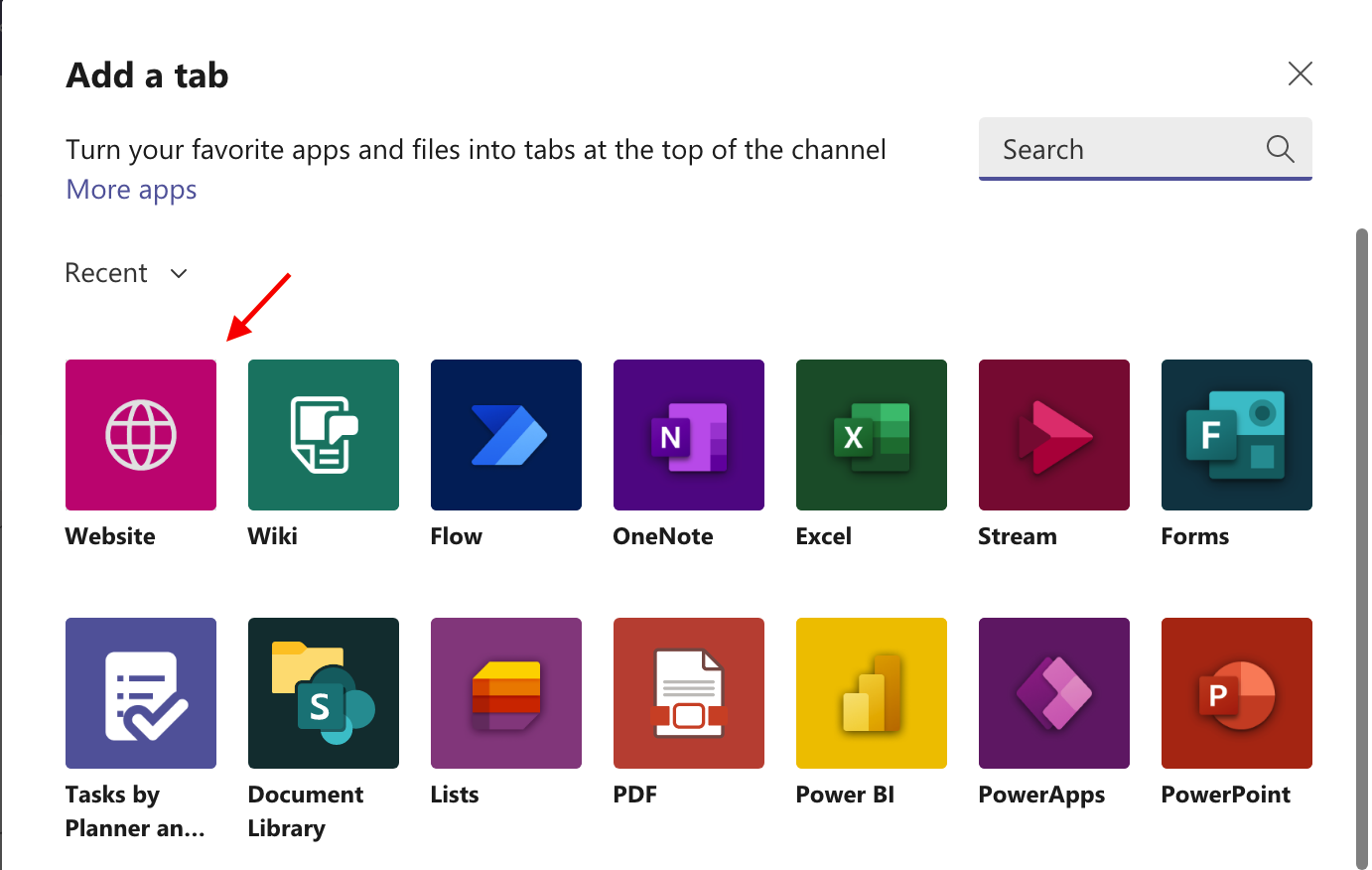
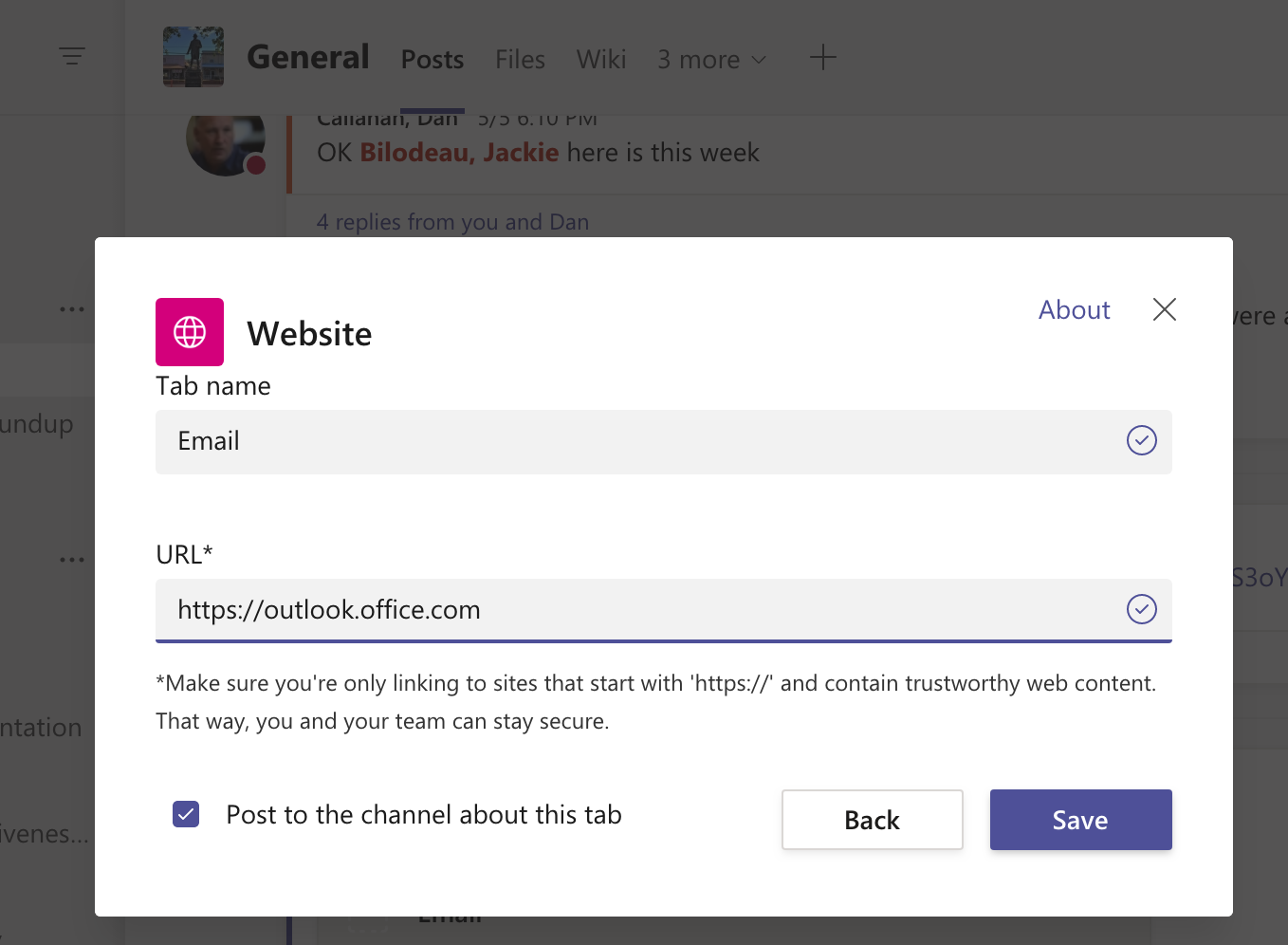
Now you will see the new email tab at the top in your Team channel, and when you open that tab you can see your inbox. Note: Only you can see your inbox; anyone else in the team who wants to use the email tab can but will see their own Inbox instead.
Stay Tuned…
I hope you found these tips useful! Be sure to check back next week for some more time-saving tips for working with Outlook and Teams.



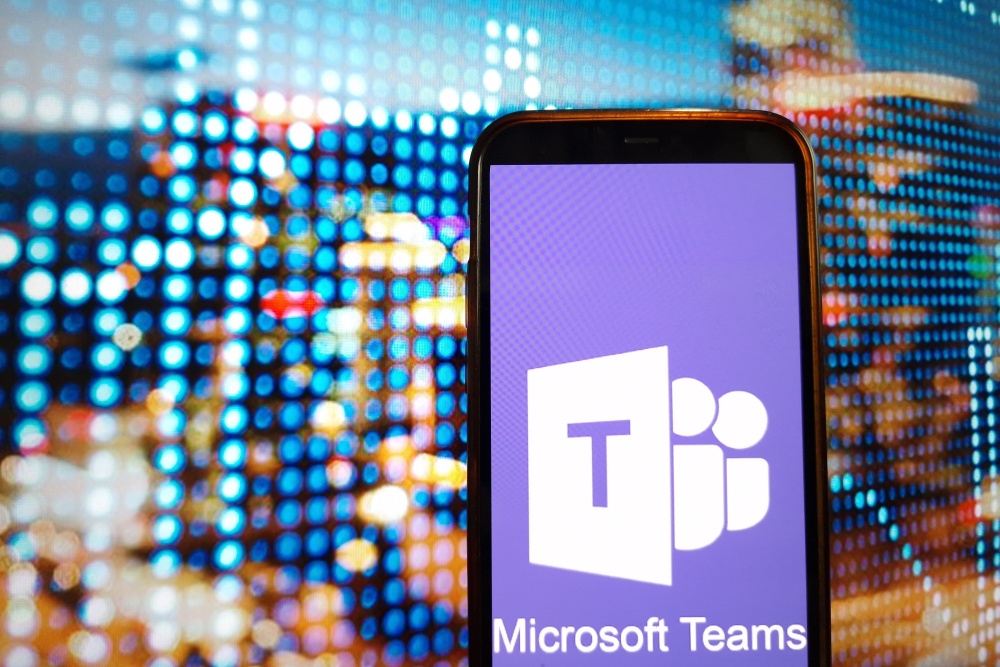

0 Comments
Trackbacks/Pingbacks